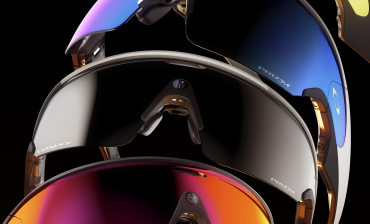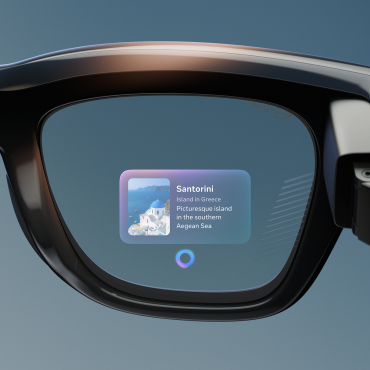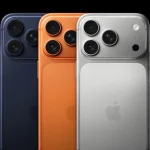
- Big Tech
- Consumer Electronics
- Gaming & Entertainment
- Smart Glasses
Meta Unveils Neural AI Smart Glasses, Secures 60% Market Share
6 minute read

Meta’s new AI smart glasses with neural control technology capture 60% market share as wearable computing adoption accelerates
Key Takeaways
- Meta shares rise 1% in premarket trading following the unveiling of $799 AI-powered Ray-Ban Display glasses at Meta Connect, targeting the premium consumer market with September 30 availability.
- Market dominance strengthens with 60% smart glasses market share and over 2 million units sold, driving 210% year-over-year growth as the global smart glasses market expands 110% in first half of 2025.
- Neural interface breakthrough introduced through Meta’s wristband technology enabling gesture control via “barely perceptible movements,” positioning the company ahead of competitors Apple, Google, and Xiaomi.
Introduction
Meta has unveiled revolutionary AI-powered smart glasses that integrate neural interface technology, sparking immediate investor confidence with premarket share gains exceeding 1%. The $799 Ray-Ban Display glasses represent a significant leap in wearable technology, featuring a high-resolution see-through display and the world’s first mainstream neural wristband control system.
CEO Mark Zuckerberg positions these glasses as the gateway to “personal superintelligence,” emphasizing their unique capability to let AI see and hear through the user’s perspective. The announcement at Meta’s Menlo Park headquarters signals aggressive expansion in the rapidly growing smart glasses market, where Meta already commands over 60% market share.

Key Developments
The Ray-Ban Display glasses launch September 30 with advanced features including a 12-megapixel camera, full-color monocular display, and five integrated microphones. The accompanying Meta Neural Band uses electromyography technology to detect hand gestures and muscle movements, enabling hands-free control through subtle finger motions.
Technical specifications include a 600×600 pixel display capable of 5,000 nits brightness with 90Hz refresh rate, providing six hours of mixed-use battery life. The glasses integrate seamlessly with Meta’s ecosystem, supporting WhatsApp, Messenger, Instagram direct messages, and third-party applications like Spotify.
Meta simultaneously updated its display-less Ray-Ban glasses, extending battery life to eight hours and introducing “conversation focus” technology that amplifies speaker voices while reducing background noise. These updated models are priced at $379, while previous versions drop to $299.
Market Impact
Meta shares gained over 1% in premarket trading following the announcement, reflecting strong investor confidence in the company’s wearable technology strategy. EssilorLuxottica, Ray-Ban’s parent company, experienced a 1.6% share increase on the Paris stock exchange, demonstrating broader market enthusiasm for smart eyewear partnerships.
The global smart glasses market projects explosive growth from $1.93 billion in 2024 to $8.26 billion by 2030, representing a 27.3% compound annual growth rate. AI-enabled glasses now account for 78% of smart glasses shipments, validating Meta’s strategic focus on artificial intelligence integration.
Meta’s market leadership appears secure with 210% year-over-year growth and over 2 million units sold across its smart glasses portfolio. The company’s dominance in this emerging category positions it favorably as consumer adoption accelerates beyond early adopters.

Strategic Insights
Meta’s premium pricing strategy at $799 targets high-end consumers, differentiating from budget competitors while establishing smart glasses as sophisticated computing devices rather than novelty accessories. The neural interface technology creates a significant competitive moat against rivals including Apple, Google, and emerging Chinese manufacturers.
The retail distribution strategy leverages established eyewear channels including Ray-Ban stores, LensCrafters, Sunglass Hut, and Best Buy locations. This approach capitalizes on traditional eyewear shopping behaviors while providing essential hands-on fitting experiences for both glasses and neural wristbands.
Meta’s introduction of sport-focused Oakley Meta Vanguard glasses at $499 demonstrates market segmentation strategy, targeting fitness enthusiasts with Garmin integration and voice-activated workout metrics. This diversification expands addressable markets beyond general consumers to specialized use cases.
Expert Opinions and Data
Industry analysts view Meta’s approach as strategically sound but acknowledge competitive risks ahead. Mike Proulx, research director at Forrester, notes the glasses offer “significant utility in a single device that is not cumbersome compared to VR headsets,” while emphasizing Meta must convince mainstream consumers the benefits justify the premium cost.
Forrester analyst Thomas Husson observes that “Zuckerberg’s long-term vision with Oculus and the Metaverse has been that glasses and headsets will blur the lines between physical and digital worlds,” highlighting momentum beyond niche early adopter markets. The analyst community recognizes 2025 as an inflection point where multimodal AI agents and augmented reality features become standard in leading smart glasses.
Zuckerberg emphasizes the transformative potential, stating “Glasses are the only form factor where you can let AI see what you see, hear what you hear” while generating desired outputs like images or videos. His vision positions smart glasses as eventual smartphone successors, keeping users present while enhancing intelligence and communication capabilities.

Conclusion
Meta’s AI-powered smart glasses launch establishes the company as the clear leader in an emerging technology category projected for explosive growth. The combination of neural interface innovation, premium positioning, and comprehensive ecosystem integration creates significant competitive advantages as the market transitions from niche to mainstream adoption.
The immediate positive market reaction reflects investor confidence in Meta’s ability to capitalize on the convergence of artificial intelligence, augmented reality, and consumer electronics. With dominant market share, accelerating growth metrics, and technological leadership, Meta appears well-positioned to shape the future of wearable computing while generating substantial returns for shareholders and partners alike.








